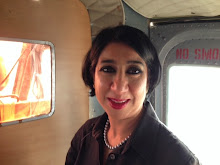714 million voters constitute the world's largest democracy. So the 2009 election is a monolithic operation. What needs to be remembered is a point made by Sir Martin Sorrell on the sixteenth of March that India is a collection of twenty-eight states and seven union territories.
Each state has its own language, customs, culture, politics and history, so India can almost be viewed as a collection of countries. Hindi, the national language, is a bit of a unifier. The middle and upper classes mostly speak English too.
Six million civil officials will oversee this election, the fifteenth since Independence. The Lower House, the Lok Sabha, consists of five hundred and forty-five seats, and the election will be in five phases.
So polling days will take place on; April sixteenth, twenty-third, thirtieth, May seventh and thirteenth.
The total Indian electorate is greater than the combined populations of the US and the Russian Federation.
The current Chief Election Commissioner N. Gopalaswami will retire during the polling phase, and his successor, Navin Chawla, will oversee the actual elections.
An Indian visa centre has just opened in Cardiff. I’m not sure whether this means that India is expecting a critical mass of Welsh journalists to be visiting for the elections, or simply that Indo-Celtic relations are undergoing a sudden upswing.
Thursday, 19 March 2009
Subscribe to:
Post Comments (Atom)


No comments:
Post a Comment